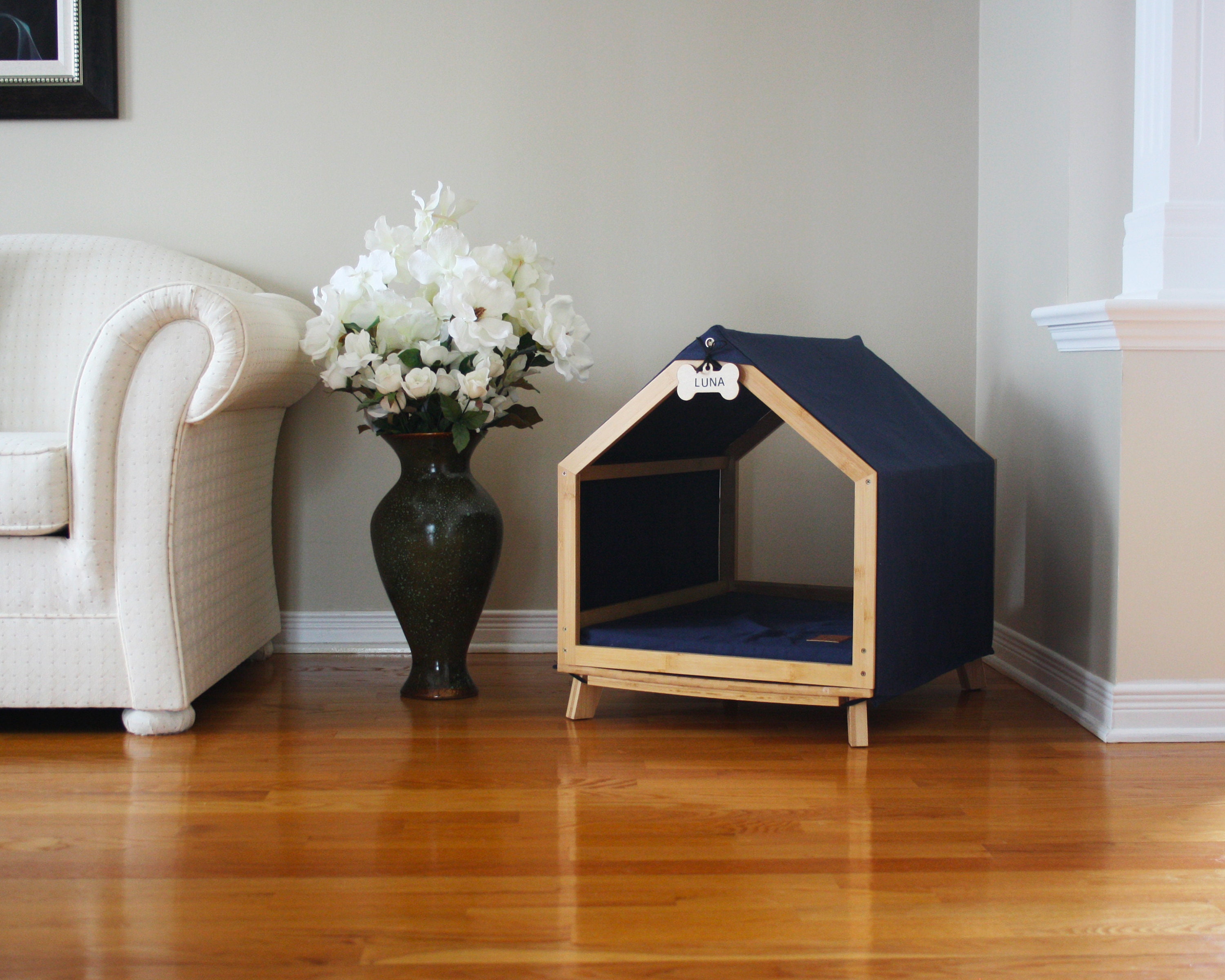Your pet deserves the best things in life, but that doesn’t mean they can get up on the furniture, or go rooting through the rubbish, or chew on your shoes.
Yes, sometimes that dog just needs to go outside. But that doesn’t mean it has to be a kind of punishment.
Dog houses, wooden and plastic models included, can be comfortable homes away from home for your furry friend. Wooden doghouses are a traditional and classic choice, but plastic dog houses have grown immensely in popularity over the last few decades as an alternate building material. So whether you’re in need of an upgrade or are buying a dog house for the very first time, here are a few things you should know about the most popular materials.
What Do Wood and Plastic Dog Houses Have to Offer?
Wood is a natural building material that offers unique features not seen in other materials like plastic, stone or metal.
For instance, some woods like cedar and cypress, give off naturally fragrant aromas.
More importantly for doghouses, some woods, like cedar and teak, produce natural resins that act to repel all nature of insects, including a dog’s worst enemy, fleas.
Plastics are a unique material in how workable and moldable they are.
Plastic can be manipulated into any number of shapes, designs, sizes, colours and textures.
Consider plastic the chameleon of the building world, which in turn makes for some of the most creative dog houses.
Wooden houses simply aren’t afforded this ability to transform so dramatically.
One of our favourite wooden dog kennels is the Insulated Pets’ Imperial Kennel
For a good plastic dog kennel take a look at the double walled FeelGood Dog Kennel which offers excellent wind and weather protection.
Which will keep your dog warmer? And cooler?
The insulating properties of both wood and plastic will keep dogs warmer in the winter and cooler in the warmer months.
However, plastic might have a slight edge in this category.
While wood possesses some amount of natural insulation, in extreme temperatures some extra padding may be needed as a supplement.
Plastic dog houses are created so that small air bubbles are placed throughout the plastic walls. The air bubbles trap warm and cold air as necessary and create an airtight seal of protection throughout the dog house.
The argument can be made conversely that this means that plastic dog houses don’t breathe as well as wooden dog houses.
One of our favourite plastic dog kennels is the sturdy and easy to assemble DogVilla from Ferplast.
Which one shows better craftsmanship?
To compare the actual work and attention to detail that goes into building these dog houses, wooden ones win every time.
That’s because of the nature of the materials.
Wood is natural, grown, harvested and often worked by hand.
Plastic is synthetic, made from chemical compounds and impersonally constructed in factories.
Where can you put them?
Both wood and plastic are fine to use as outdoor dog houses; wooden structures are made from those same strong hardwoods found in other types of patio furniture, while plastics are by nature waterproof.
The specific poly blends used in things like outdoor furniture and dog houses is also more durable than other kinds of plastic.
Which is easier to put together?
For ease of assembly, this one goes to plastic dog houses.
Wooden dog houses often come unassembled (which is consequently cheaper to ship since it can packaged into smaller units).
Plastic dog houses typically come pre-fabricated because they are not put together in the same way.
That being said, it’s typically pretty easy to put together wooden dog homes, and companies make their instructions user-friendly so that anyone can do it.
There’s also the benefit when working with the materials yourself that you get a better idea of how things put together, so if something needs fixed or replacing you have a better idea how to go about it.
At the same time, you know exactly how strong a structure really is, because you are seeing and working with those materials that keep it together.




Okay, but which one costs less?
This question is often the most pressing, and especially now in our tight economy.
When it comes down to the actual price tag, the winner is plastic dog houses.
Wooden houses use a slightly more expensive material, which also needs to shipped from the forests in which it’s harvested.
All of this requires manpower hours, plus the manpower required of handcrafted pieces.
Plastics in general provide a cheaper alternative to other materials, especially natural materials.
Just remember that plastics are not a long-lasting as wood, so chances are you will need to buy a new dog house every few years, so the costs somewhat balance out over time.
Final words – my preference
Although there is a good case for plastic dog kennels in terms of their resilience and lightweight, my preference has to be wood.
A wooden kennel or doghouse is hard to beat in terms of workmanship, quality and simple appeal and, having had a number of wooden kennels I find them to be ideal.
Dogs will chew their kennels and, although not great, I would rather they chewed wood as opposed to plastic.
Plastic does not require the maintenance of wood and will last longer – but, for me, it’s a wooden kennel everytime, the natural aspect is tough to beat.
[amazon bestseller=”wooden dog kennel” items=”3″ template=”table”]




